To view this content, you must be a member of the Rose City Review Patreon
Already a qualifying Patreon member? Refresh to access this content.
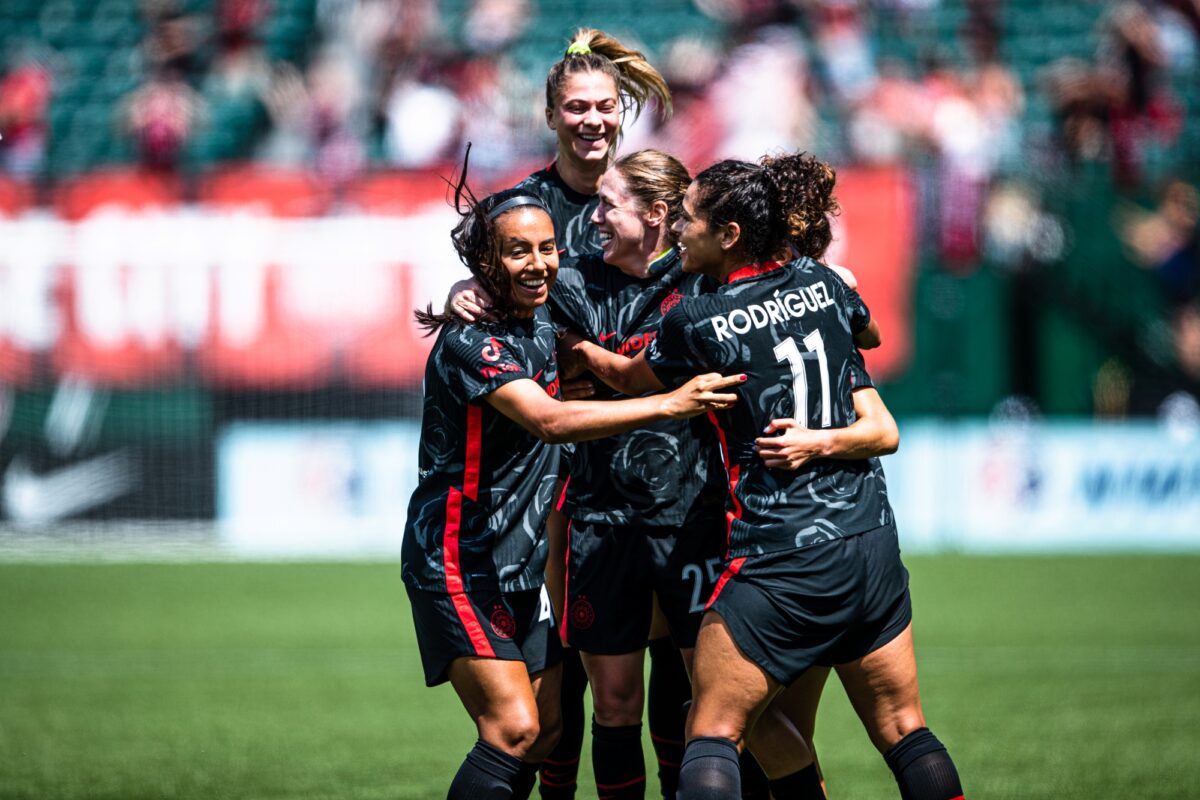
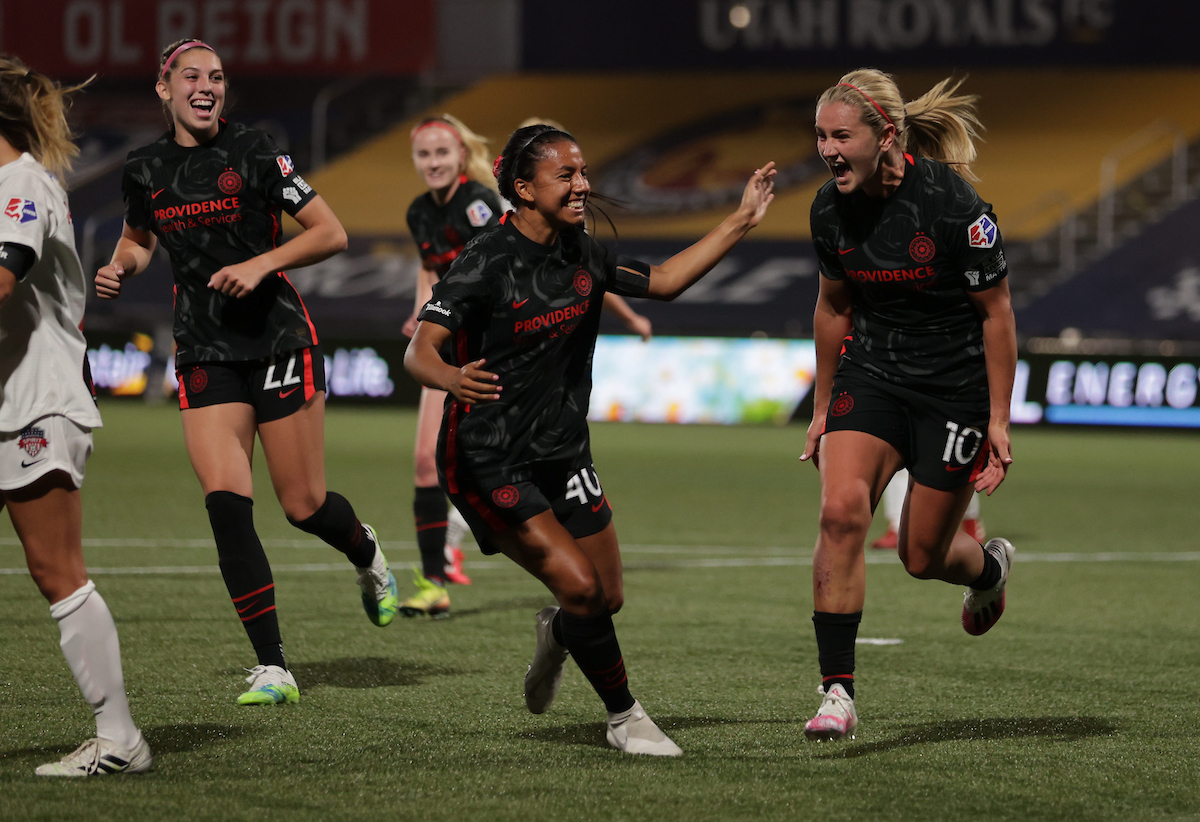
The Thorns settled for a 1–1 draw tonight against the Washington Spirit, with Lindsey Horan scoring a diving header off a free kick in the 69th minute, and conceding one, also on a set piece, a few minutes later. Let’s dig into what happened:
With each game in this tournament, we’ve seen a slightly different facet of the Thorns’ shiny new diamond midfield. Against North Carolina, we saw the team’s dual No. 8s, Lindsey Horan and Rocky Rodríguez, put wide defensive pressure on the opposing outside backs and No. 10s. On the offensive side, the duo succeeded in breaking the Courage’s press in the center of the field. In this game, we saw Horan and Rodríguez both spend a lot of time attacking in wide areas, with the bulk of Portland’s chances coming on crosses, especially in the first half.
A diamond midfield is often thought of as quite narrow, but not the way the Thorns are playing. Portland attempted an almost Courage-like 19 crosses, and players all up and down the field—from Meghan Klingenberg and Christen Westphal in the back, to Rodríguez and Horan, to Morgan Weaver up top—contributed in that area. Unfortunately, nobody managed to put any of those in the net—though a few came close.
The attack was less focused down the wings in the second half, with Horan finding a few penetrating passes toward Tyler Lussi. According to Mark Parsons, though, that wasn’t by design. “I think the desperateness to score meant that we were gravitating centrally,” he said after the game. “Width is key, and we’re going to get width from multiple areas. You can see from our forwards and also our midfield, and also fullbacks when the shape allows, and the buildup allows the fullbacks to push on. So it wasn’t a switch, unfortunately.”
The question here—and for once, despite my perennial (and fact-based) insistence that the Thorns don’t actually struggle to score goals, I think it’s a fair one—is who’s going to get on the end of those crosses. Horan, obviously, is an extremely dangerous header of the ball. Other than her, of the current healthy players, Lussi seems best suited to that role, but she seems to still be finding her way into this tournament. On the other hand, Portland did find 10 shots from inside the box, even if only four of them were on frame.
Before the tournament started, I asked whether Horan (tonight’s Budweiser Woman of the Match) is such a dominant player that she ends up posing a problem when it comes to squad-building. At the time, I was assuming the Thorns would be using a three-woman midfield as they generally have the past few years; Rodríguez’s strong showing, along with the backing of a true No. 6 in Angela Salem, have proven that specific concern wrong.
However, I still think there’s a potential issue here. Horan is so good, in so many areas of the field, that Portland would be foolish not to let her do as much as possible. She’s been ridiculous in this tournament, the most impactful single player in any of the games she’s played. She disrupts, sets play in motion, and then moves all the way up the field with it, often ending up taking the eventual shot (or, in this game, cross). In tonight’s match, she produced the majority of the chances, took the most touches, conceded the most fouls, and scored Portland’s lone goal.
It’s been a surprise to me to see both her and Christine Sinclair—with whom there’s a similar issue, if not quite to the same extent—starting every game and playing the majority of the available minutes. Parsons says she’s in the best shape of her life and can handle this week; the Thorns also now have a full, luxurious week of no games. Sinclair, meanwhile, is famously fastidious in her recovery protocol. Regardless, I still wonder why these two players started every game, especially given the amount of squad rotation the team has otherwise undergone from day to day.
I don’t have anything particularly smart to say here, but it reminds me of this: I used to play on a rec-league softball team with a friend who was a ludicrously gifted athlete. He nominally played shortstop, but because our roster tended to be split 50-50 between what I’ll call “real athletes” and “the others,” he inevitably ended up covering half the infield. He’d catch a fly ball, tag a runner, and then sprint 40 feet to ever-so-gently toss the ball underhanded to one of the lesser mortals on the team. On top of that, his movements were graceful and beautiful to watch. When he played, we could win. When he didn’t? Things… were harder.
I don’t think winning is the Thorns’ priority in this tournament, at least not at this stage; I think getting everybody minutes and figuring out how the team functions is the point. What I wonder is whether Horan is so central to the team, because she does so much, that playing without her would be a pointless exercise. I also wonder if, in the long term, relying that much on a single talismanic player might make things harder.
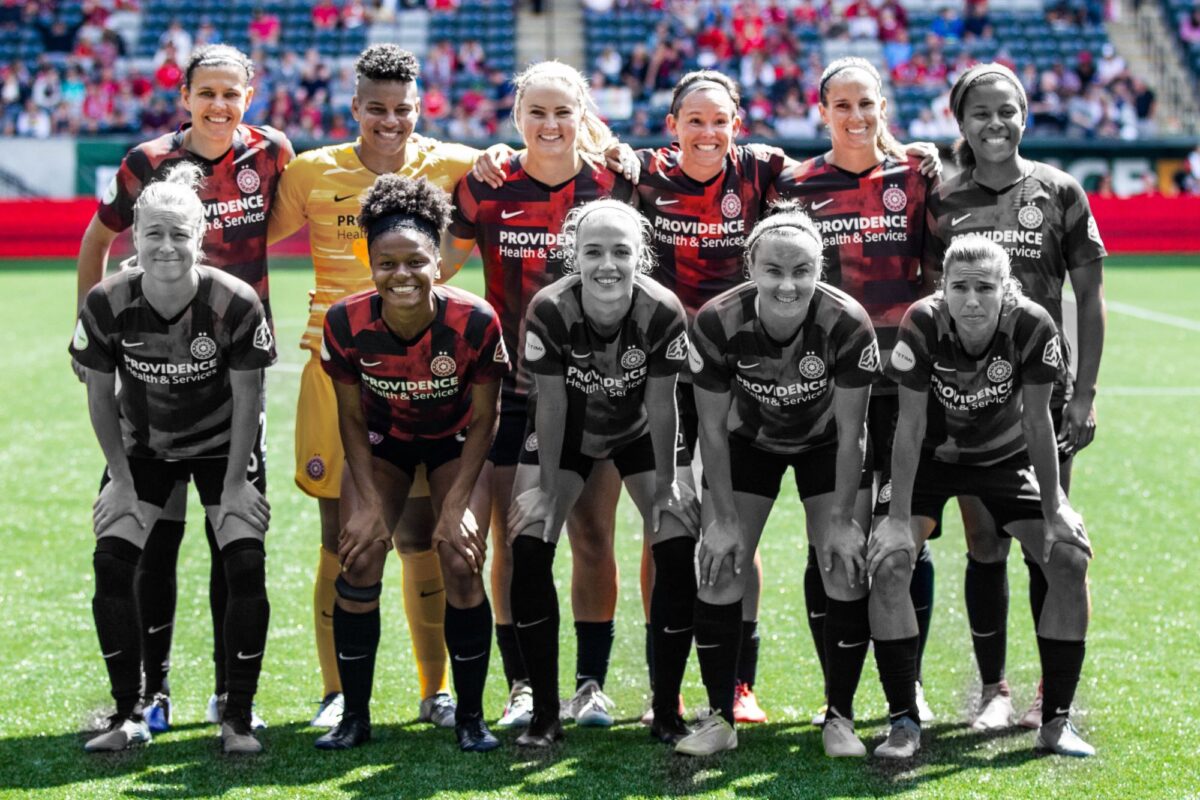
With the NWSL set to become the first American sports league to attempt a restart, the eight teams—minus the Orlando Pride, who, as we learned Monday, will sit out due to multiple positive COVID-19 tests on the team—that will participate in the Challenge Cup released their rosters yesterday.
One thing is certain: between a huge amount of offseason tumult and a stack of last-minute contracts—not to mention yesterday’s announcement that Tobin Heath will not participate—this won’t be a Thorns team we’ve ever seen before. A few of our thoughts on the newly announced roster are below.
The Thorns, presumably, had a plan heading into this season. Amid whispers of a needed culture change, the club sent half the roster packing, snagged two promising young forwards at the draft, and made moves for Becky Sauerbrunn and Rocky Rodríguez. Fill in a few more blanks, and it’s easy to envision a good soccer team materializing—but those blanks never got filled. What we’re left with is pieces to a whole that never got finished.
Things were cast into even more doubt last week with the departure of Ellie Carpenter. With her departure, Sauerbrunn—a legendary but aging, and slowing, center back—starts to look less adequate as the season’s big defensive acquisition. The team has options at right back, but it’s hard to envision any of them filling Carpenter’s shoes on day one against North Carolina.
But here’s the good news: soccer is a game. More good news: this “season” isn’t real. Even more good news: historically, the Thorns have played some of their most fun, memorable games without their veterans. This isn’t the same as a World Cup or an Olympics—Lindsey Horan and Christine Sinclair will be there—but the tight schedule means we’re sure to see more squad rotation than we normally would. The sheer volume of new names on this roster means it’s impossible to guess which players are going to be the Meg Morrises or Simone Charleys of this tournament.
That’s not to mention the proven names new to this Thorns roster; Rodríguez obviously falls into that category, as does, I would argue, Sophia Smith. This group of forwards, in particular, is mostly quite young, and none of them are French, but I’d bet they’re going to be a hell of a lot of fun to watch. Wacky stuff is going to happen in this tournament. Let’s enjoy it, yeah?
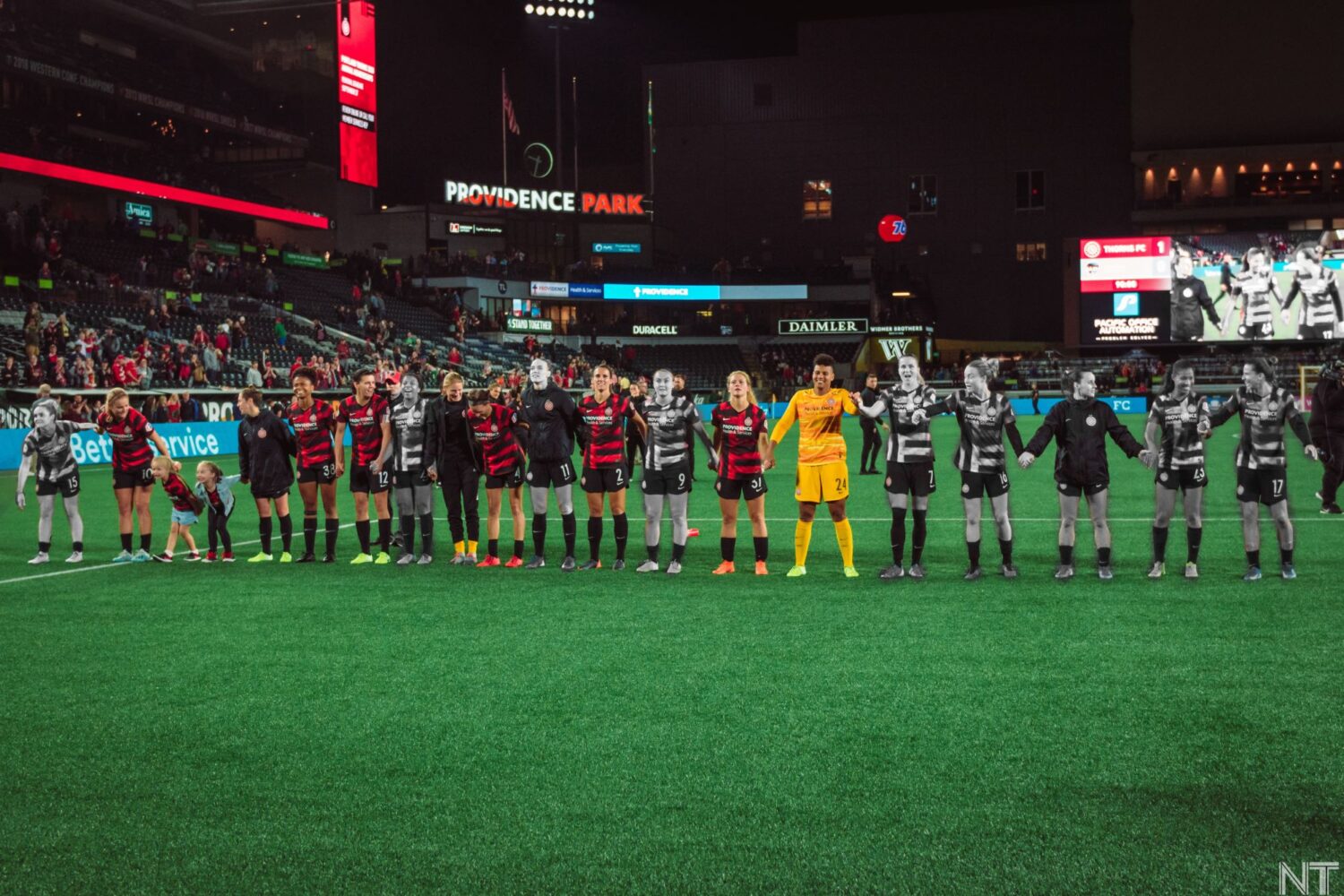
I have this theory that’s going to sound ridiculous when I say it, but bear with me: Horan is a problem. More specifically, the role Horan plays for the Thorns is a problem.
In 2016 and 2017, Portland deployed Horan and Amandine Henry in the central midfield as dual No. 8s. Both could play disruptor, both could set plays in motion, and both could make forward runs and score themselves. They would trade off on these duties, one sitting back while the other pushed into the attack, and this worked because Henry is just as good at all those things as Horan.
When Henry left, Mark Parsons wanted to continue using the same system, swapping Andressinha in alongside Horan. This went… less well. Andressinha simply isn’t a strong or physical enough player to fill that role. Since then, a succession of players have been tapped to fill that third midfield slot, including Celeste Boureille, Dagný Brynjarsdóttir, and Gabby Seiler. Boureille, for a moment in 2018, worked well; she doesn’t have Henry or Horan’s creative brilliance, but she proved to be a good disruptor deep in midfield. Seiler, for a still briefer moment in 2019, looked even more promising. But none of them have played as Horan’s double like Henry did—unsurprising, seeing as none of them are in the conversation for being the best central midfielder in the world.
This is the question: is there another player anywhere on earth capable of playing a second No. 8 alongside Horan as effectively as Henry did?
Parsons intends to try again with Rodríguez. On its face at least, this makes a lot more sense than trying to convert Andressinha into a No. 8 did, seeing as Rodríguez has played a box-to-box role in the NWSL, you know, ever, although never in the same system; at Sky Blue, she played alongside Sarah Killion, a much more defensive player than Horan. The question is how well Rodríguez can partner with a player who, at any moment, can show up anywhere on the field.
I’d describe myself as curious, leaning toward optimistic about this. At any rate, I’m excited to see Rodríguez, who I think has been underperforming for a few years, in a new environment. And if it doesn’t turn out? Try her at right back, why not!
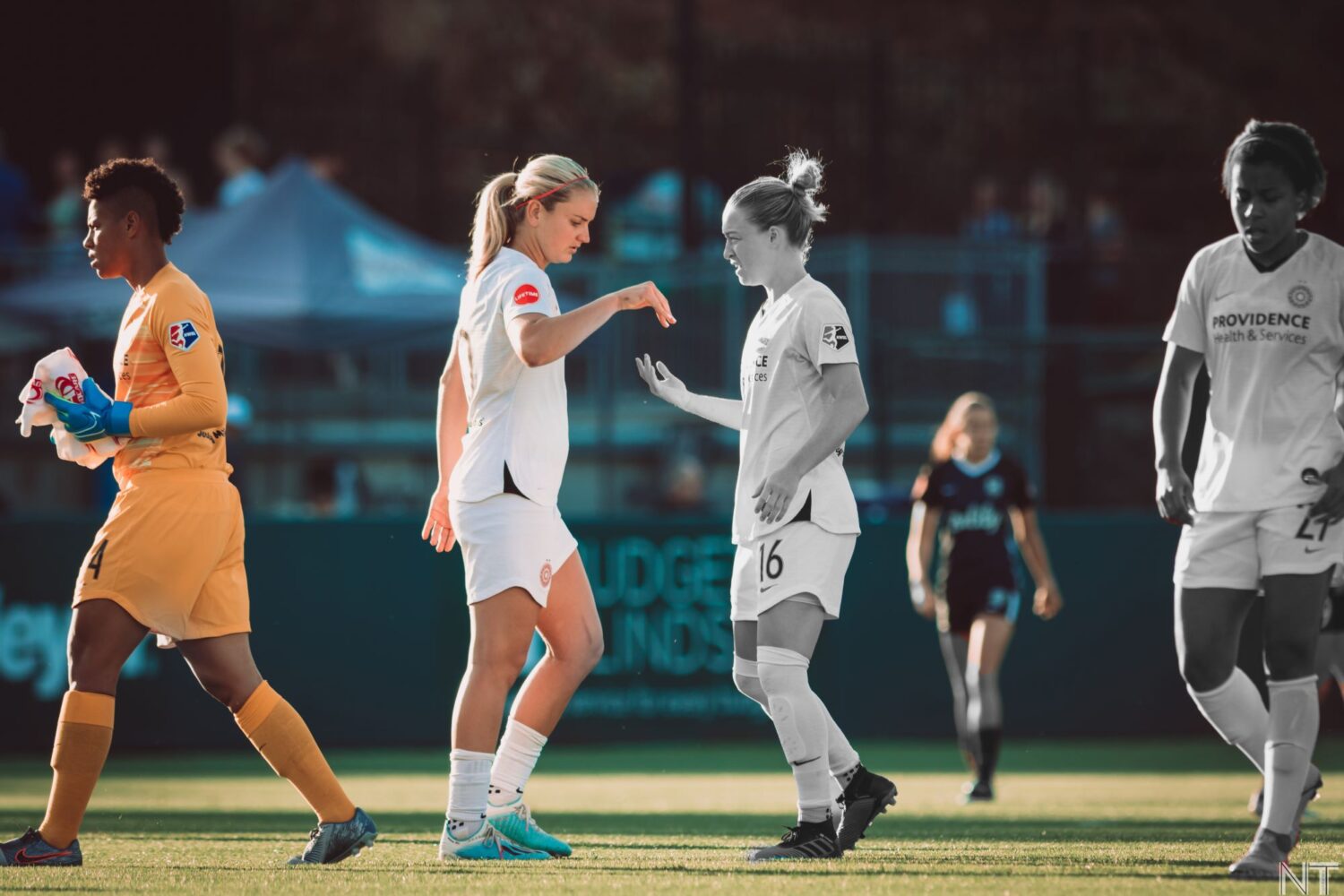
With all of nine players listed as defenders on this roster, one presumably would not have as many questions about Portland’s back line as I do. With a schedule that has the Thorns playing their opening three games over the course of nine days, rotation is going to happen, and I think it’s going to happen sooner than we expect.
If you look at a back four of Meghan Klingenberg, Emily Menges, Sauerbrunn, and Katherine Reynolds, something comes to the forefront pretty quickly: three of them are over 30 and two of them aren’t particularly fast. (Menges, of course, is the exception in both these statements, and Sauerbrunn isn’t slow, per se, but as Katelyn points out above, she’s definitely past her peak.) And while they’re all very capable players, the quartet leaves something to be desired against a fast, high-pressing North Carolina.
On the other hand, Parsons isn’t exactly known for throwing young players into the line of fire. But if these games don’t really matter, there’s no time like the present to experiment, right? Yeah, there’s still Kelli Hubly and Christen Westphal—and where is Seiler going to play? As the No. 6 in a diamond midfield? Somewhere in defense?—but I personally think it would be very cool if Madison Pogarch got the start on Saturday. And why not give Meaghan Nally and Autumn Smithers some time in this tournament while we’re at it?
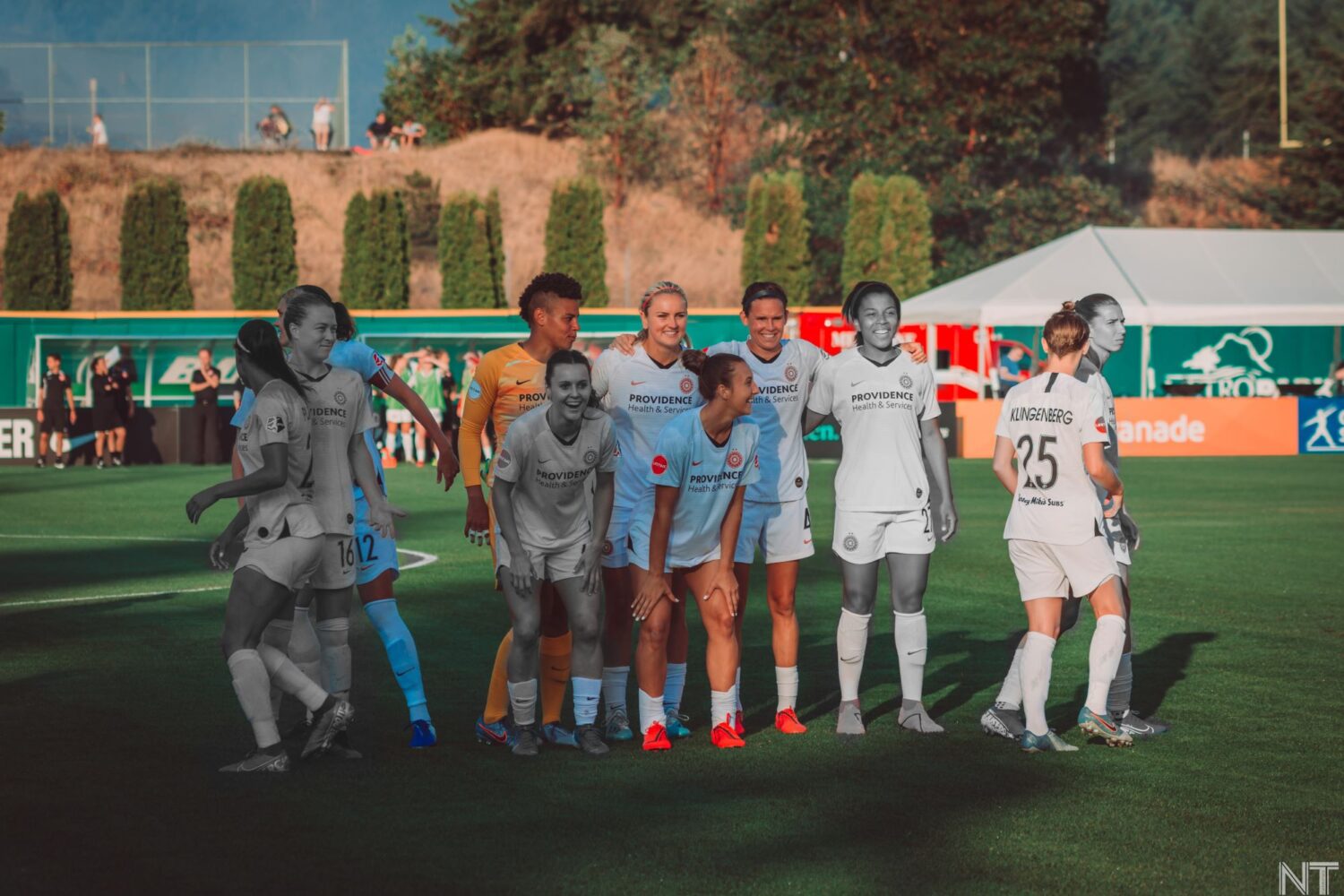
Guess what I remembered today? Two-time NWSL Goalkeeper of the Year Adrianna Franch still plays for the Thorns. Not only that, but she won’t be missing games that she could be playing with the Thorns for national team duty.
Given the experimentation we’re going to see with this team, having arguably the best keeper in the league—and undisputedly the one with the best handling—means, worst comes to worst, at least we’ll see some great goalkeeping.
Tobin Heath has chosen to stay at home for this tournament. That is her right as a player, and it’s one that all the players in the NWSL have, as guaranteed by the negotiations between the player’s association and the league. Looking at the state of coronavirus cases in the US and Utah specifically, it’s a perfectly reasonable decision to make, and knowing how much she lives for soccer, it has to be an incredibly painful one.
What it means for the team is that, with the departures of Midge Purce, Hayley Raso, and Caitlin Foord in the offseason, no regular-rotation players from the 2019 forward line will play in the NWSL Challenge Cup. Sure, Christine Sinclair is listed as a forward, but you and I both know that’s not how it works, and in a compressed schedule, it’s even less how it works. Sinclair is simply not going to be running around full tilt for 90 minutes on three day’s rest, as much as I’m sure she wants to.
No, the forward line is going to a rotation of players who, while extremely talented, haven’t proven themselves as starters in the NWSL yet. This is going to be an attacking bullpen with no hierarchy and no secure starting places. Expectations are high for some of the talent on hand, but there’s quite a bit of depth, so the team can afford to take some risks if things need to be shifted around.
Heath has such gravity in the team and is so important that when she’s in the team they will almost always play in a very specific way, with Heath one of the three up front drifting inside. No one plays exactly how she does, so without her, Parsons has experimented with back threes, relying on wingbacks for depth. But with Carpenter’s departure, the team has only one proven attacking option from deep in Klingenberg.
So where is the attack going to come from? Sophia Smith and Morgan Weaver, the Thorns’ first-round draft picks, were both wide players who specialized in cutting inside and shooting in college. The Thorns could, in theory, play only them up top and load up another player in midfield to get more creation there. That would mean leaving Simone Charley and Tyler Lussi out of lineups though, and both are high-energy players whose styles of play, in totally different ways, can completely throw defenses off guard. Charley’s ability with the ball at her feet on the break, and Lussi’s combination of strength and shooting mastery will both likely prove useful up against different defenses. Marissa Everett showed off a knack for poaching shots in her limited minutes last year, impressing the team enough to earn a contract this year, and Anika Rodriguez, yet another undrafted player the Thorns picked up this offseason, flashed some creative passing playing alongside Ashley Sanchez at UCLA. The depth probably doesn’t even end there. Parsons loves throwing young defenders into the fray as attackers: this is where Pogarch got her first minutes for the club, so the new defenders could absolutely see some minutes there. The possibilities seem endless. It’s now on these young players to make the most of their opportunities.
Goalkeepers (3): Bella Bixby, Britt Eckerstrom, Adrianna Franch (FED-USA)
Defenders (9): Kelli Hubly, Meghan Klingenberg, Emily Menges, Meaghan Nally (CDP), Madison Pogarch, Katherine Reynolds, Becky Sauerbrunn (FED-USA), Autumn Smithers, Christen Westphal
Midfielders (6): Celeste Boureille, Lindsey Horan (FED-USA), Emily Ogle, Rocky Rodríguez (INTL), Angela Salem, Gabby Seiler
Forwards (7): Simone Charley, Marissa Everett, Tyler Lussi, Anika Rodriguez, Christine Sinclair (FED-CAN), Sophia Smith (CDP), Morgan Weaver (CDP)
Key: CDP—2020 NWSL College Draft pick; FED—Federation Player; INTL—International Player